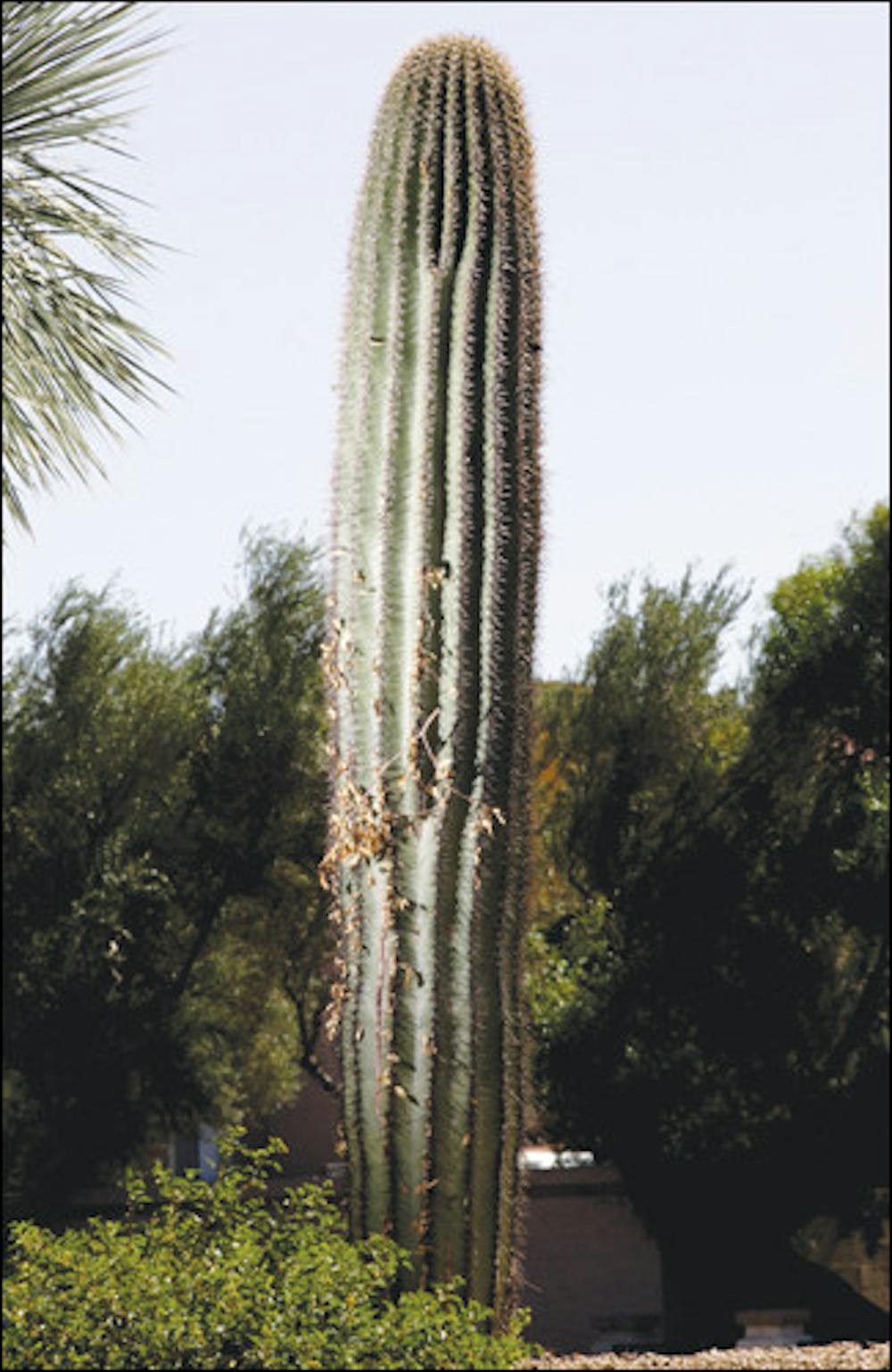Federal officials are planning a project that will put microchips into saguaro cactuses to deter poachers who steal the cactuses and sell them to homeowners for landscaping, a Saguaro National Park official said.
Officials are looking to use the same kinds of microchips that are currently used to identify domestic cats and dogs, said Bob Love, chief ranger at the park, which is just east of Tucson. Chips will have a unique code that is identifiable by a special scanner.
Officials hope to begin microchip insertion by the end of next summer, he said. Research for the project started in late 2007.
There were an estimated 1.3 million saguaros in Saguaro National Park according to the last census conducted by the park, Love said. Though saguaros are not an endangered species, they are protected by the state of Arizona. The saguaro flower is also Arizona’s state flower.
Jim McGinnis, supervisor for the special investigations office at the Arizona Department of Agriculture, said that only a select number of cactuses within the park would receive the chips, leaving thousands of acres of saguaros around the state unprotected.
“[Cactus poachers] are going to avoid those and go somewhere else,” McGinnis said.
He said saguaros targeted by poachers usually range from six to 15 feet in height, but most poachers tend to take cactuses within the six to eight-foot range because they are easier to handle and conceal in a truck bed.
Many stolen saguaros are taken during the twilight hours or under cover of darkness, after poachers have picked out their targets during the day.
“Others did it in the light of day,” McGinnis said. “It was blatant, and they didn’t care.”
McGinnis could not give an estimate of the number of cactuses stolen each year.
“We don’t have a handle on things,” McGinnis said, citing the lack of money budgeted for the enforcement and deterrence of cactus theft.
McGinnis said poached saguaros are often taken out of the state to places as far as Kansas, where the cactuses would not be able to survive unless kept under special conditions.
Few of the targeted cactuses are sold to nurseries. Saguaro poachers often target individuals and homeowners. It is suspected that some homeowners poach the cactuses themselves, McGinnis said.
Lorrie Scott, a nursery worker for Saguaro Country Nursery in Surprise, said most nurseries acquire their saguaros by a combination of propagating their own and obtaining harvesting permits from the Department of Agriculture to legally harvest tagged saguaros from designated areas.
“[Saguaros] should be protected, and if protecting them means … that any harvesting is done through the Department of Agriculture with tags and permits, that’s the way it has to be,” Scott said. “It’s really important to follow the avenues that the system has built for saguaro harvesting.”
ASU research scientist Scott Bingham said saguaros are a vital part of the ecology of the Sonoran Desert.
“There’s all sorts of birds, insects and bats that depend on the saguaro,” Bingham said. “It would upset the ecology very much if they weren’t here. … Efforts to save the saguaro from poaching are relevant and important.”
Reach the reporter at deborah.bevers@asu.edu.




